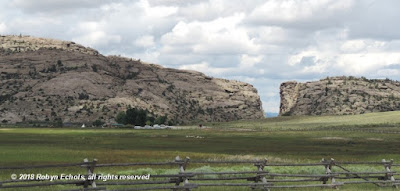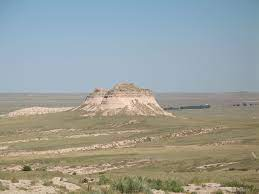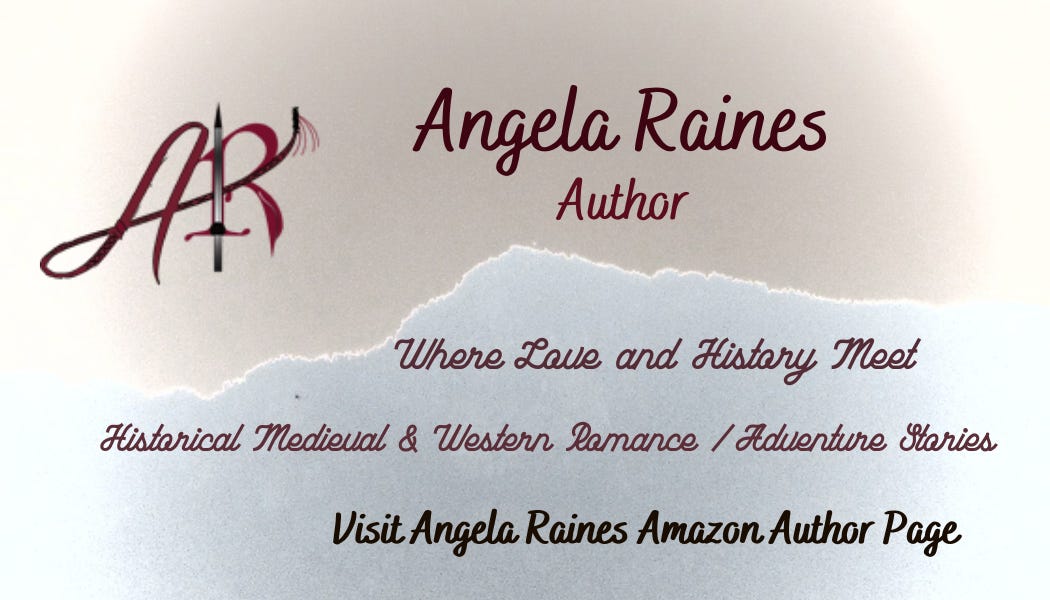Not far from Devil’s Gate, two fur traders, Charles Lajeunesse and his business partner, Auguste Archambault, built their trading post called Fort Seminoe in 1852. Seminoe comes from Simonot, or “Little Simon,” the French Catholic baptismal name of fur trader, Charles Lajeunesse.
The pair sold to wagon trains heading west, serviced the mail, and the military companies traveling back and forth across the plains. This trading fort operated only during the summer months. Each winter, the partners returned to St. Louis, Missouri.
The fort was built with fourteen buildings formed in a U shape. Besides the main trading post, Fort Seminoe included a blacksmith shop, a horse corral, a cattle yard, storerooms, and living quarters for the family of Lajeunesse, Archambault, and other traders who operated at the post. Travelers who stopped by the fort were able to buy provisions and hardware. They were also able to exchange their worn-out cattle for healthy livestock.

Fort Seminoe to South Pass
For three years, they traded with passing wagon trains
during the summer and returned to St. Louis, Missouri, for the winter. In the
fall of 1855, with traffic along the trail subsiding and a fight between the
Sioux and the U.S. Army looming, Lajeunesse left his trading post for good.
The fort burned down in 1862. The site faded from knowledge, but in 2001, the actual fort site was discovered. After careful research, Fort Seminoe was rebuilt in 2002 near its original location. Inside are exhibits that tell the story of the French trapper’s trading post, as well as the history of what took place at the fort after it was abandoned. The story of how these buildings became a haven after its role of a trading fort ended will be featured in next month’s post.
To see photos of the reconstructed fort as well as information about how it was used following its abandonment, please CLICK HERE.
Pearl was my first book published in the Prairie Roses Collection (2022). Many of the same characters are in both Pearl and Clara. It also included the part of the story where the wagon train traveled passed Devil’s Gate as the wagons crossed the Sweetwater River nine times before reaching South Pass. The book is available as an ebook and in paperback, and also at no additional cost with a Kindle Unlimited subscription. To find the book description for Pearl and the purchase options, please CLICK HERE
Clara is a wagon train story. This book picks up Clara’s romance after the wagon train has already traveled the trail through Sweetwater River valley. The book is currently available for purchase as an ebook or at no additional cost with a Kindle Unlimited subscription. To find the book description and purchase options, please CLICK HERE
Sources:
Thompson, Julie Nichols, “The Winter Guard at Fort Seminoe,” Tales of Triumph. (Salt Lake City, Utah: International Society of Daughters of Utah Pioneers, 2022), pgs. 121-122.
https://www.northamericanforts.com/West/wy.html#seminoe
https://history.churchofjesuschrist.org/content/historic-sites/wyoming/fort-seminoe?lang=eng








